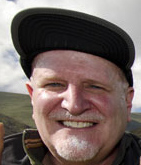Richard Hughes | |
|---|---|
 Richard Hughes in 2011 | |
| Years active | 1980–present |
| Known for | Gemology |
Richard W. Hughes is an American gemologist and author who specialises in corundum, particularly rubies and sapphires. He is a co-founder of Lotus Gemology, a gemological testing laboratory based in Bangkok, Thailand. [1]